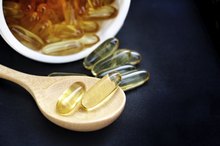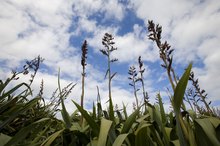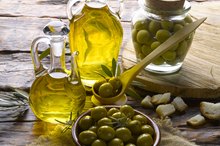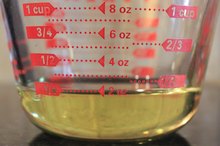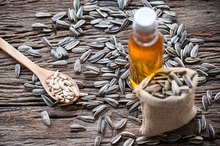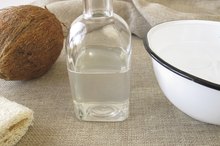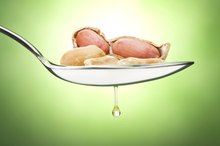What does fact checked mean?
At Healthfully, we strive to deliver objective content that is accurate and up-to-date. Our team periodically reviews articles in order to ensure content quality. The sources cited below consist of evidence from peer-reviewed journals, prominent medical organizations, academic associations, and government data.
The information contained on this site is for informational purposes only, and should not be used as a substitute for the advice of a professional health care provider. Please check with the appropriate physician regarding health questions and concerns. Although we strive to deliver accurate and up-to-date information, no guarantee to that effect is made.
What Is Fractionated Palm Oil?
Understanding food labels gets more complicated by the day, with new chemical additives and multisyllabic ingredients only adding to the confusion. The term “fractionated palm oil” confounds many consumers, but it merely refers to an oil processing method that divides, or fractions, the oil into different fat components 1.
Identification
Palm oil comes from the fruit of the oil palm species E. Guineensis, which grows throughout western Africa and Malaysia. In its natural state, palm oil possesses a bright orange color because it contains large amounts of carotene. Because it contains nearly 50 percent saturated fat, palm oil maintains a semi-solid state at room temperature.
Function
Is Vegetable Shortening a Trans Fat?
Learn More
The palm oil fractioning process involves two main steps: crystallization and filtration. During crystallization, the palm oil’s triglycerides melt at different temperatures, fractioning the oil into liquid and solid components. The character of the crystals produced depends on the temperature, time and agitation used during the process. The fractioned palm oil then passes through a filtration process, dividing the oil into liquid palm olein and solid palm stearin components.
- The palm oil fractioning process involves two main steps: crystallization and filtration.
- The fractioned palm oil then passes through a filtration process, dividing the oil into liquid palm olein and solid palm stearin components.
Features
Since the liquid has been filtered out, fractionated palm oil has a thicker texture than normal palm oil. A higher percentage of saturated fat accounts for this additional thickness. According to the American Palm Oil Council, fractionated palm stearin contains roughly 60 percent saturated fat and 40 percent unsaturated fat, and it’s this solid fractionated portion of the oil that finds its way into many food products.
- Since the liquid has been filtered out, fractionated palm oil has a thicker texture than normal palm oil.
- According to the American Palm Oil Council, fractionated palm stearin contains roughly 60 percent saturated fat and 40 percent unsaturated fat, and it’s this solid fractionated portion of the oil that finds its way into many food products.
Uses
How Much Oil Should You Eat?
Learn More
Food manufacturers favor fractionated palm oil due to its stability and high melting temperature. Since it’s more solid and resistant to melting, fractionated palm oil coats many chocolate products and other food items that could be compromised due to heat. Many supposed health foods and energy bars will use fractionated palm oil to help maintain consistency.
Warnings
Fractionated palm oil contains a higher percentage of saturated fat than normal palm oil. Due to processing methods, fractionated palm oil may contain varying levels of saturated fat, making it difficult for consumers to know exactly what they’re eating 1. According to the American Heart Association, saturated fats raise blood cholesterol levels, in turn increasing the risk of heart disease and stroke.
Misconceptions
Fractionated palm oil should not be confused with hydrogenated oils. The fractioning process only increases the percentage of saturated fat. In contrast, hydrogenation actually hardens the oil and soft fats, destroying healthy unsaturated fats and forming unhealthy trans fats.
Related Articles
References
- Food and Agricultural Organization: Palm Oil Processing
- http://www.fda.gov/Food/DietarySupplements/QADietarySupplements/default.htm
- The Washington Post: Food 101
- IFIC Foundation. IFIC Foundation.
- Aasa J, Granath F, Törnqvist M. Cancer Risk Estimation of Glycidol Based on Rodent Carcinogenicity Studies, a Multiplicative Risk Model and in Vivo Dosimetry. Food and Chemical Toxicology. 2019;128:54-60. DOI:10.1016/j.fct.2019.03.037
- Harvard Health Publishing. By the Way, Doctor: Is Palm Oil Good for You? Harvard Health.
- Vijay V, Pimm SL, Jenkins CN, Smith SJ. The Impacts of Oil Palm on Recent Deforestation and Biodiversity Loss. Anand M, ed. PLOS ONE. 2016;11(7):e0159668. DOI:10.1371/journal.pone.0159668
Writer Bio
William Lynch has been a freelance writer for the past fifteen years, working for various web sites and publications. He is currently enrolled in a Master of Arts program in writing popular fiction at Seton Hill University. He hopes to one day become a mystery novelist.


